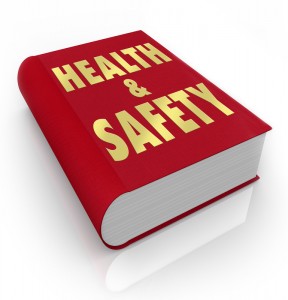 Health and Safety is an important part of working life in the United Kingdom. From humble origins, the regulations passed have made it much safer for an individual to work in almost any industry. While it may have started only as a concern for children working in factories, every decade has seen a significant amount of expansion in the concern for health and safety of the average worker in the UK.
Health and Safety is an important part of working life in the United Kingdom. From humble origins, the regulations passed have made it much safer for an individual to work in almost any industry. While it may have started only as a concern for children working in factories, every decade has seen a significant amount of expansion in the concern for health and safety of the average worker in the UK.
When did Health and Safety in the UK begin?
The early days of the Health and Safety Regulations can be traced to the first provisions of the Factory Act of 1833. The Act was initially meant to protect child workers, but time and changing laws would eventually lead to inspectors who were responsible for health and safety in virtually all factories, combining the role of safety inspector with technical advisor.
The remainder of the 19th Century saw more Inspectorates formed, namely the Mines Inspectorate and Quarry Inspectorate. Both were put into place after the law began to offer protection that is more significant to workers, and each was met with significantly less resistance than the earliest provision of the Factory Act.
The 1950s would see the expansion of health and safety concerns to new fields. Agriculture would be the first concern, especially in the matters of those children working in the field. Not only would it be necessary for certain restrictions to be placed on working activities, but further reporting requirements were placed on incidents of accident and disease, 1959 would see the establishment of Nuclear Installations Inspectorate, largely in response to an incident at the Windscale Nuclear Site. Today’s Nuclear Installations Inspectorate is the descendant of the organization set up in this act.
Acts that are more significant would be established in the 1970s. The Health and Safety at Work Act would pass in 1974, which established the Health and Safety Commission. The Health and Safety Executive would be formed a year later, in 1975. Two years later, regulations would allow safety representatives to be appointed from among workers in trade unions. While these changes might seem to be relatively small on their own, the 1970s set the tone for the remainder of the twentieth century’s safety regulations.
The 1980s would mark the fiftieth anniversary of the inspectorates, and lead to further health and safety acts. First aid regulation would be the first order of the 1980s, followed by the licensing of asbestos and even enforcement of genetic manipulation regulation. By 1985 would see another one of the major regulations passed, this time in regards to reporting.
For the first time, reporting of job-related injuries, disease and dangerous occurences would be mandatory. 1988 would bring about regulations to limit employee exposure to dangerous chemicals, though the year would also be marred by significant accidents. The final year of the 1980s would see the regulation of both noise and electricity at work, acts which would lead to a better overall quality of life for workers in many industries.
The 1990s would lead to even reforms that are more sweeping, 1990 brought about new regulatory measures for the rail and nuclear safety research, while 1991 brought offshore safety regulation under the umbrella of the HSE. 1992 brought about the so-called “six pack”, a group of regulations that concerned work equipment for many individuals, including specific regulations about display screen, safety equipment and manual handling operations.
1994 featured a completed review of the regulations, as well as new regulations on Construction design and management for the construction industry. By the end of the decade, gas safety and major hazardous chemicals would also have new health and safety regulations.
The twenty-first century has been shaping up as a time of new regulations, integration of services and higher accessibility. Be it the replacement of tried-and-true posters with updated examples, the new Safety Alert system or even the merging of offices, it seems that Health and Safety will continue to be an important part of the life of those who live and work in the UK for many years to come.

A chartered (fellow) safety and risk management practitioner with 20+ years of experience. David provides a healthy dose of how-to articles, advice and guidance to make compliance easier for construction professionals, Architects and the built environment. Get social with David on Twitter and Linkedin.



